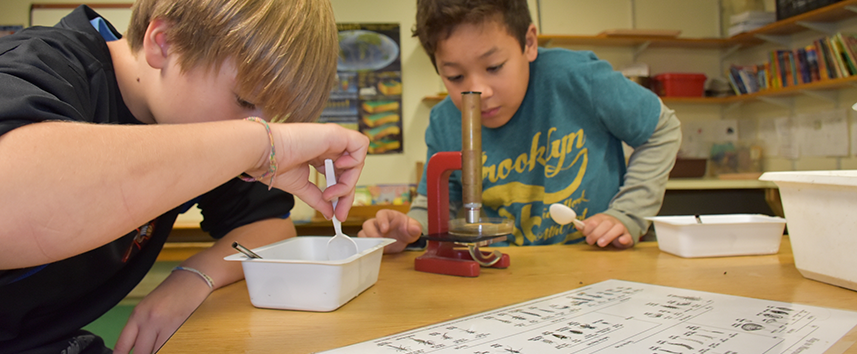Miquon Receives Protecting Our Water Award

The Schuylkill Action Network presented a Protecting Our Water Award to fifth and sixth grade students at The Miquon School for their work protecting the river and drinking water in the Schuylkill River Valley. An award ceremony recognized the school for its work restoring a section of its 1,400 creek and included presentations by Rick Rogers, acting deputy director of the Water Protection Division of the U.S. Environmental Protection Agency’s Mid-Atlantic Office, Virginia Vassalotti of the Partnership for the Delaware Estuary, and Miquon students.
An integral part of its outdoor and science curriculum, the Miquon Creek is a first order tributary to the Schuylkill River and provides students with a multitude of opportunities for hands-on learning and exploration. Decades of mill farming, development in the watershed, and severe weather events significantly degraded the creek’s ecosystem health. Recent storm surges, causing noticeable erosion and creek bank loss, led Miquon into a campaign to restore the creek – an effort entailing constructing a series of riffles and pools in the steam and creating shallow aquatic beds to mitigate erosion during large storm events.
To fund the restoration project, Miquon raised $71,000 from its school and camp families, and secured a $95,000 state grant from the Department of Environmental Protection’s Growing Greener program. Contractors Biohabitats and Aquatic Resource Restoration designed and implemented the restoration plan.
Later Refugia, Miquon’s landscape design/build partner, led teams of Miquon parents and children to install native plants to stabilize the stream bank and further protect adjacent wetland areas and groundwater seeps — which in turn, protect water quality.
Before and after the creek restoration, students engaged in a watershed curriculum that included conducting a survey of the macroinvertebrates as an indicator of water quality, measuring and documenting the stream’s slope and grade, and creating a 1:6 scale model of the creek itself.
As a part of their survey, the students placed leaf bags in the steam to collect species living in the water.
“Using petri dishes and microscopes, we identified the macroinvertebrates — such as planaria — that we found in the water,” explained Julia Butensky, a sixth grader from Roxborough.
The students compared their results with the same study conducted the year prior, before the restoration work was completed.
“Last year we only had a lot of boring scuds,” explained fifth grader Theo Robinson (Mt. Airy). “This year, I found 15 species.”
Vassalotti of the Partnership for the Delaware Estuary concurred; noting students finding a larger number of macroinvertebrates and more species meant the stream was getting cleaner.
“This water you’re protecting goes to the Schuylkill River, and that becomes drinking water for a lot of folks,” said EPA’s Rogers. “Everything you are doing and will continue to do is going to make that water even better. It is really important.”
Annually the science curriculum at Miquon — comprising students in Nursery (age 3) through sixth grade — entails a study of the campus watershed and an overview of the water cycle.
